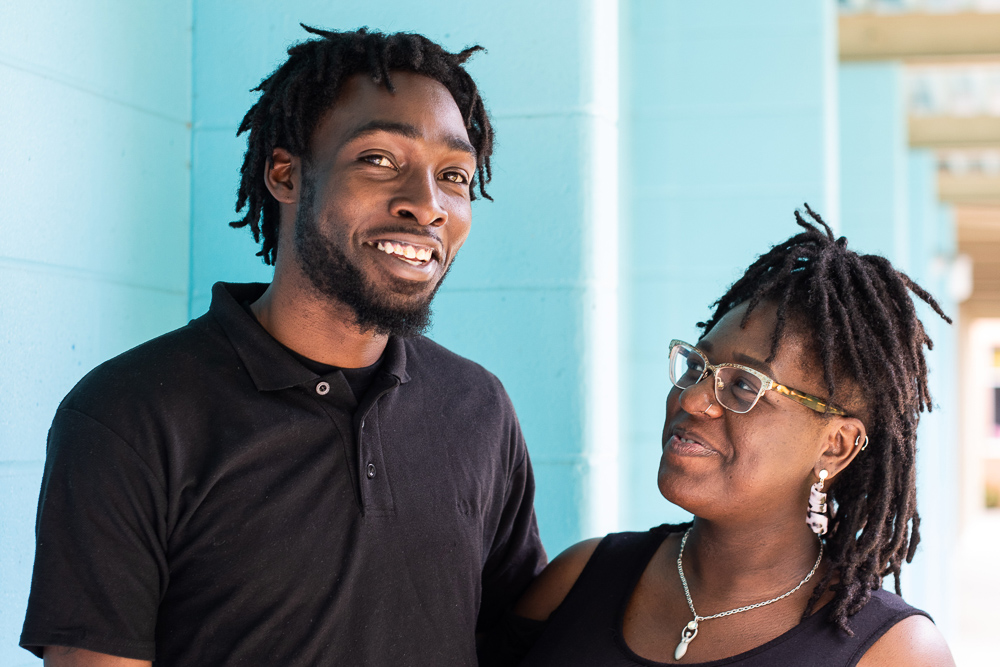

Shanicka was pregnant with her first baby at 17, and Danzel has a daughter with an ex-girlfriend. They have two more kids together, and rely on a nearby charity to help with child care.
Shanicka is grinding out a degree in business at Texas A&M-San Antonio. Danzel holds down jobs while juggling his family’s schedule with one car and limited gas resources.
Both were born into families experiencing economic hardship and all that comes with it: unstable homes, under-performing schools, and a sense that family and neighborhood histories repeat themselves.
Danzel’s family is in Mississippi, while hers is just over on San Antonio’s East Side, but “everyone is grinding; everyone is busy,” and they do not have many supportive relationships.
Shanicka and Danzel discuss how access to communication basics like phone and internet is less reliable in their lives. Because they have a low income, the cell phone providers don’t lock them into contracts but offer one-month plans. You pay, your phone stays on. You miss a payment, and your phone turns off. When you can afford to pay again, they give you a new phone number.
“I’ve been trying to look for a job,” says Shanicka. Potential employers haven’t been calling, and “I’m like, did they get the old number?”
“Before we found out I was pregnant,” says Shanicka, “my number had been off for about four months. I would miss phone calls from the school. They just said recently that [my son] has severe sleep apnea, and they had called me to schedule appointments for the referrals. I missed those. I was like, ‘Oh god, now I’m pregnant, I can’t miss those appointments, too.’ So I had to use the little amount of money I had to go cut my phone on, but I don’t know if it’s going to be on long.”
Danzel has had a phone in the past. “But right now,” he says, “I think it’s more important for her to have one.”
They share about all kinds of things: having to take two buses to get to church on Sundays; how the amounts they get for food stamps and housing assistance fluctuate automatically when they earn a bit more money one month; the challenge of seeing a doctor; and the challenge of putting protein on the table—“We eat a lot of sides,” says Shanicka.
Yes, they’re caught up in an incredibly complex struggle of life, just like millions of other Americans living in areas with limited opportunities. But, they laugh their way through. They’re a young family that is battling it out, a day at a time. By sharing their story, they help us better understand the lives of our neighbors.

Note: This article was originally published by Echoes magazine in June 2019.